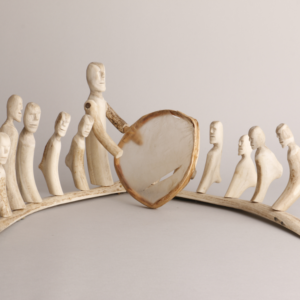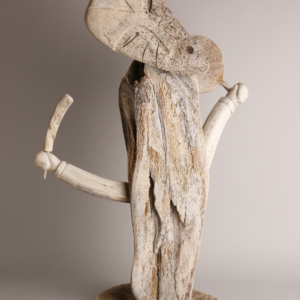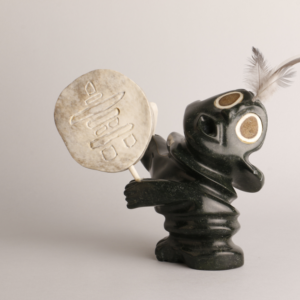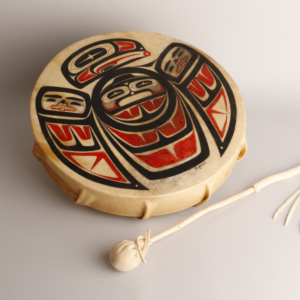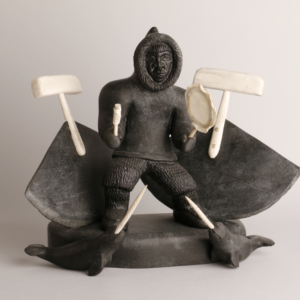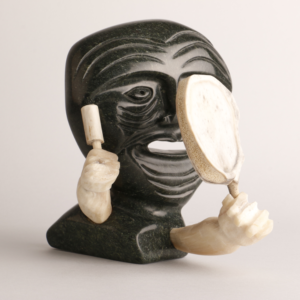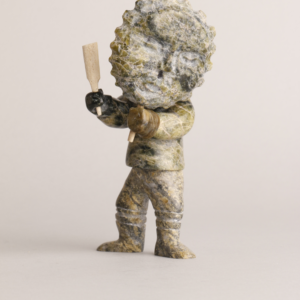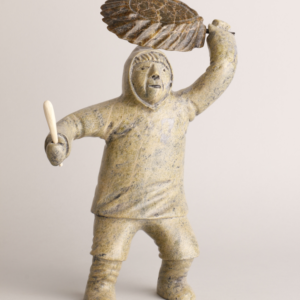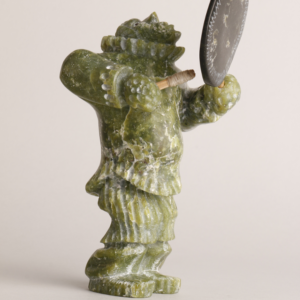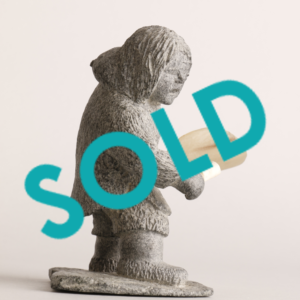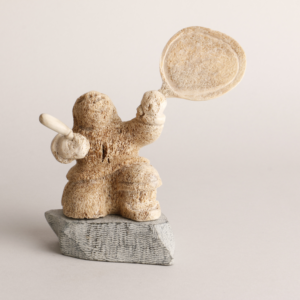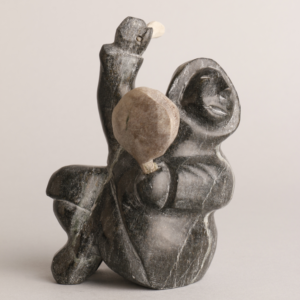Drum and Drum Dancing
There are many functions slumbering in a drum. As percussion instrument it accompagnies the mythical songs of the shamans, which they performe in nocturnal séances. Thanks to its sound the drum can be used to call for celestial guardian spirts, animal spirits and departed shamans from a long ancestors list. At the same time the sounds created by the shaman and his drum may be used to discourage, banish and disarm negative powers. The cosmic noise, that the drummer evokes on his instrument, frightens his enemies and forces the evil spirits to vanish.
The most striking characteristic of the arctic drum is an external handle, usually very short and fixed at the bottom of a round or oval wooden frame. The external handle is made from wood or ivory, now and then decorated with sparce carvings. Due to the slimness of the frame, the drum has a low weight. It is covered on one side with an unpainted membrane, that originates from the hide of a stomach (walrus, polar bear or other sea mammals). This type of drum is equally prevalent among the Chukchi, Aleut and Inuit and witnesses the cultural connections among the arctic peoples on both sides of the Bering Strait.
«The skill of drum dancing is like the skill of driving a dog-team. You must know where to hit, get a good start (with the singers) and keep a good pace…the warm-up [phase] may be short or long. Often the singer and the audience take a long time to warm up to the drum. But if you don’t have a long song, then you must have a fast start … Get on the right track and go with the singer at the sam time … Drum dancing is just like driving dog-teams – you have to warm up. It’s not like a skidoo. You have to know where you’re going, get in the right track and go – all at the same time.»*
*Noah Piugaattuk Iglulik, Inuit Art Quarterly, Vol. 9, No. 1, p. 26

